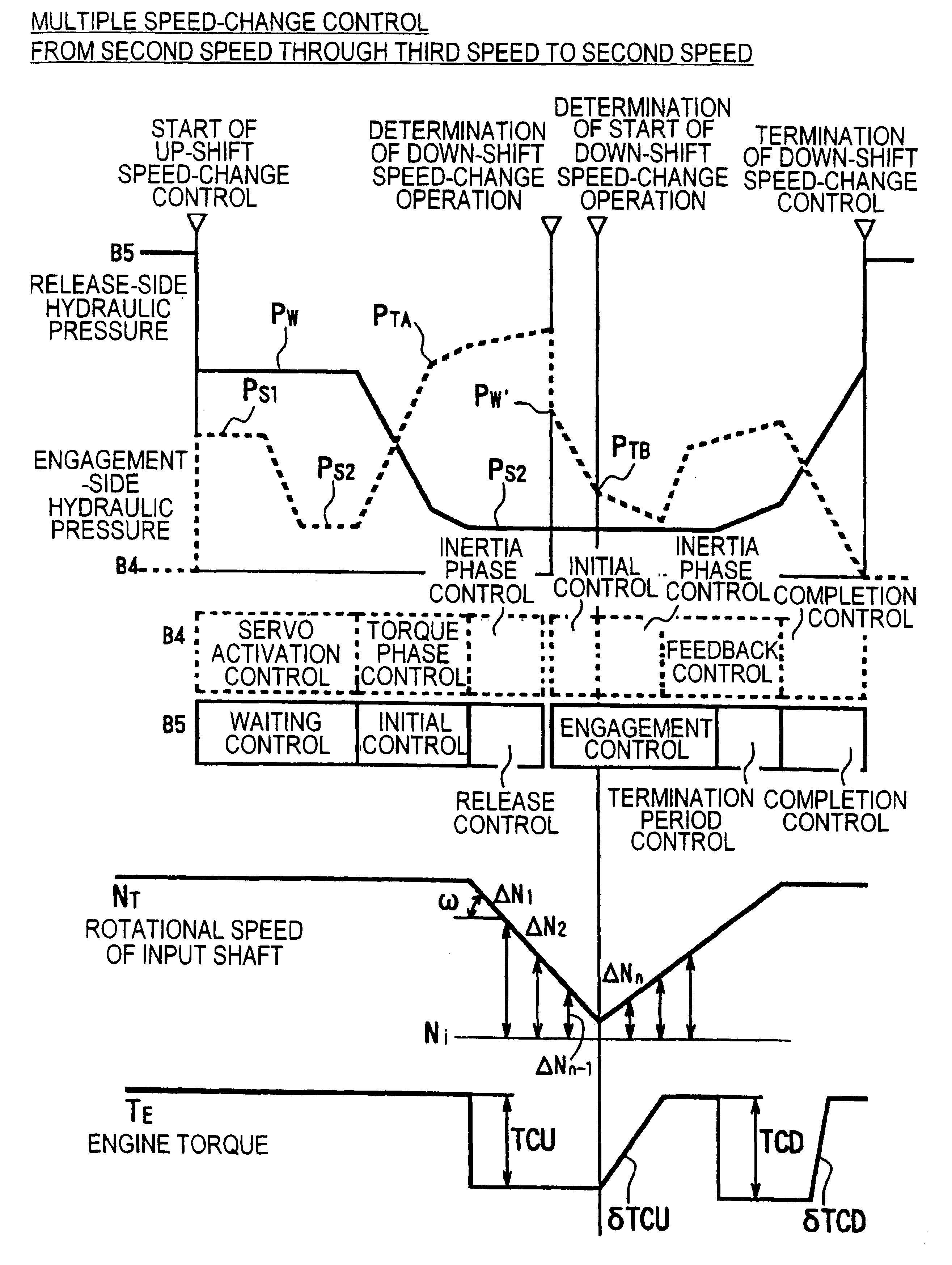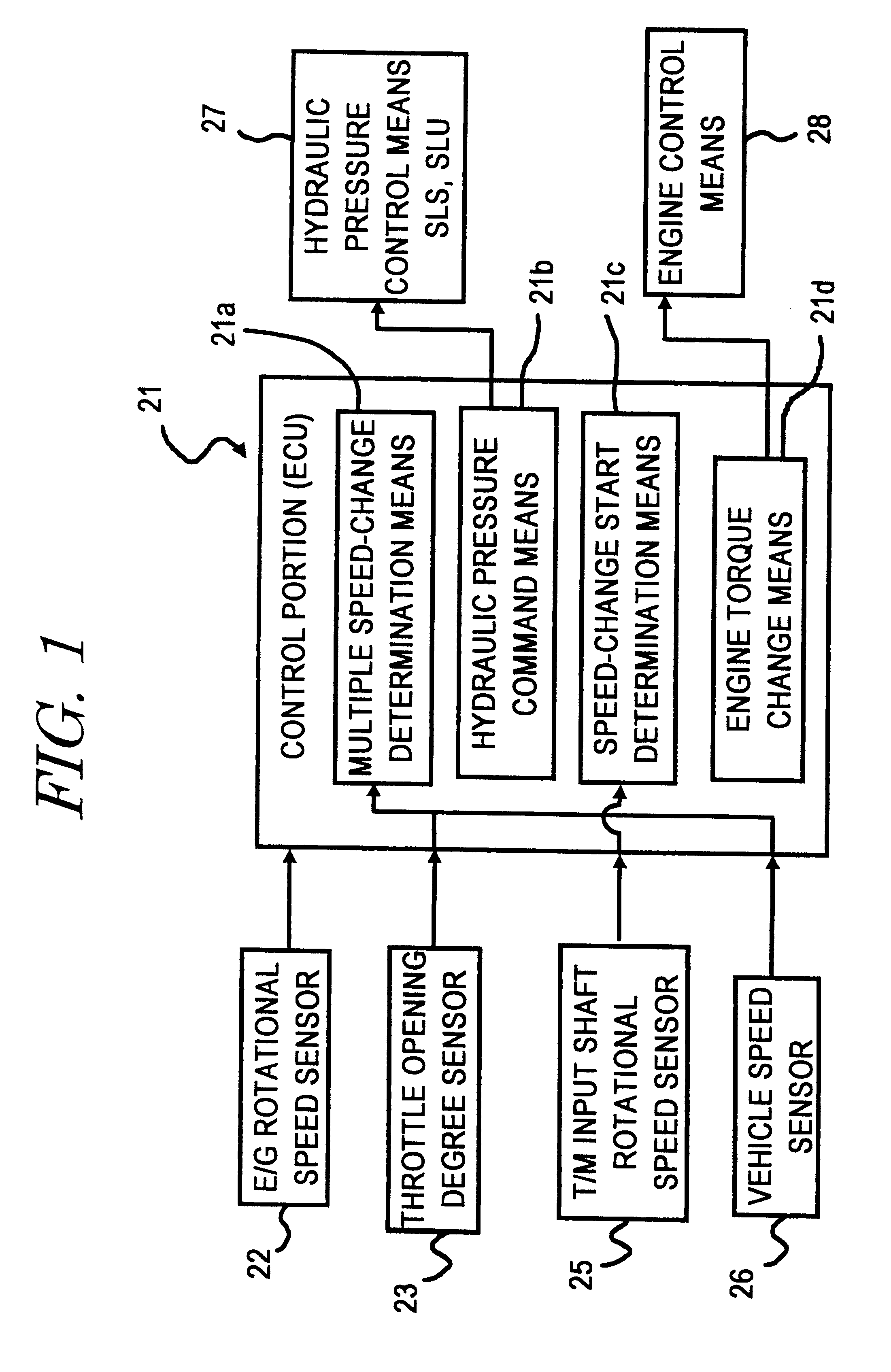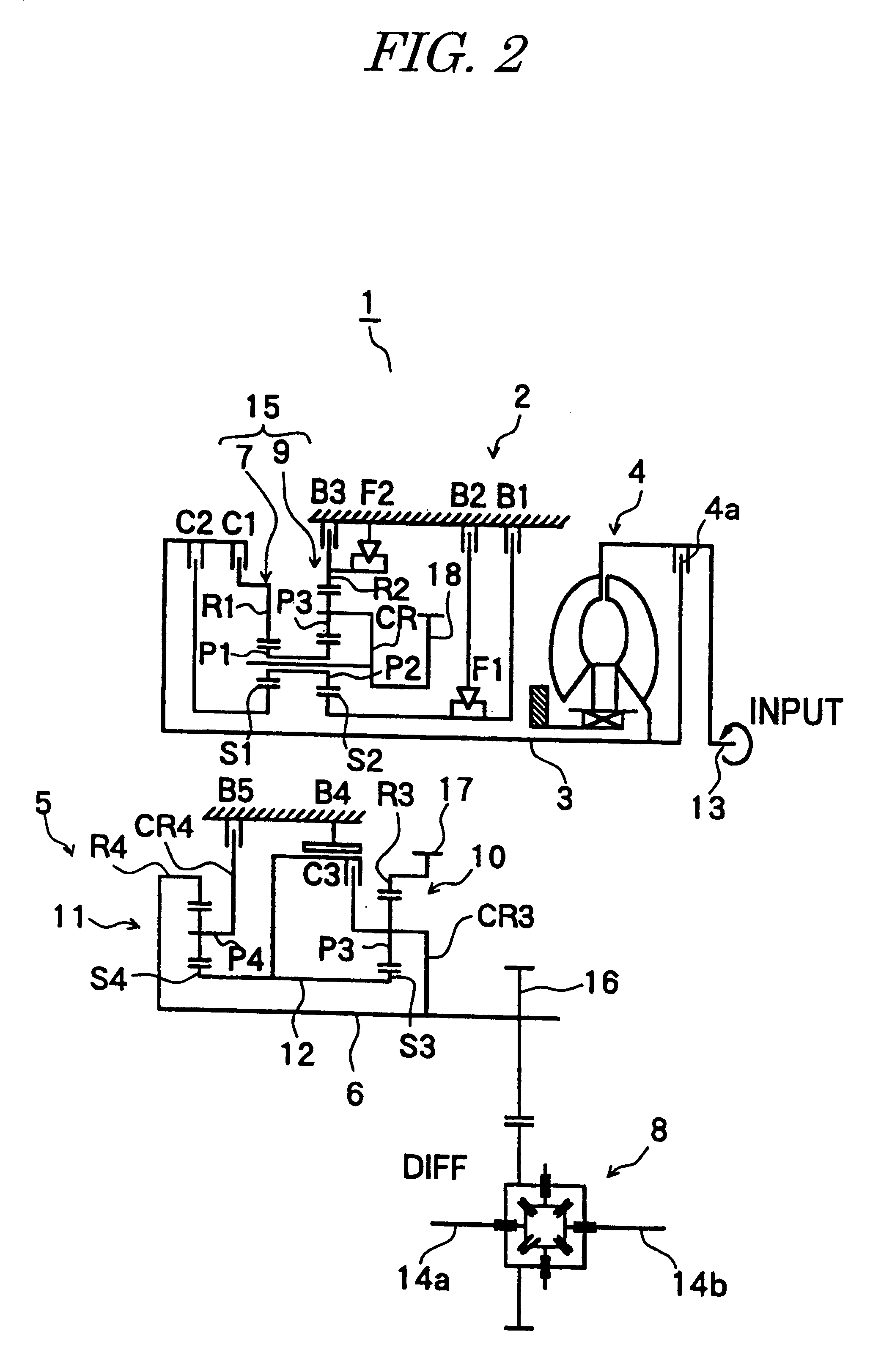Engine torque control during multiple speed changes of an automatic transmission
- Summary
- Abstract
- Description
- Claims
- Application Information
AI Technical Summary
Problems solved by technology
Method used
Image
Examples
Embodiment Construction
An embodiment of the present invention will be described hereinafter with reference to the drawings.
As shown in FIG. 2, a five-speed automatic transmission 1 is provided with a torque converter 4, a three-speed primary speed-change mechanism 2, a three-speed secondary speed-change mechanism 5 and a differential 8, which are interconnected to one another and accommodated in an integral-type casing. The torque converter 4 is provided with a lock-up clutch 4a. Power is inputted to an input shaft 3 of the primary speed-change mechanism 2 from an engine crank shaft 13 through oil flowing in the torque converter or through mechanical connection based on the lock-up clutch. The first shaft 3 (more specifically, input shaft), a second shaft 6 (counter shaft) and third shafts 14a and 14b (left and right vehicle axles) are rotatably supported by the integral-type casing. The first shaft 3 is aligned with the crank shaft, and the second shaft 6 and the third shafts 14a and 14b are parallel to ...
PUM
 Login to View More
Login to View More Abstract
Description
Claims
Application Information
 Login to View More
Login to View More - R&D
- Intellectual Property
- Life Sciences
- Materials
- Tech Scout
- Unparalleled Data Quality
- Higher Quality Content
- 60% Fewer Hallucinations
Browse by: Latest US Patents, China's latest patents, Technical Efficacy Thesaurus, Application Domain, Technology Topic, Popular Technical Reports.
© 2025 PatSnap. All rights reserved.Legal|Privacy policy|Modern Slavery Act Transparency Statement|Sitemap|About US| Contact US: help@patsnap.com



